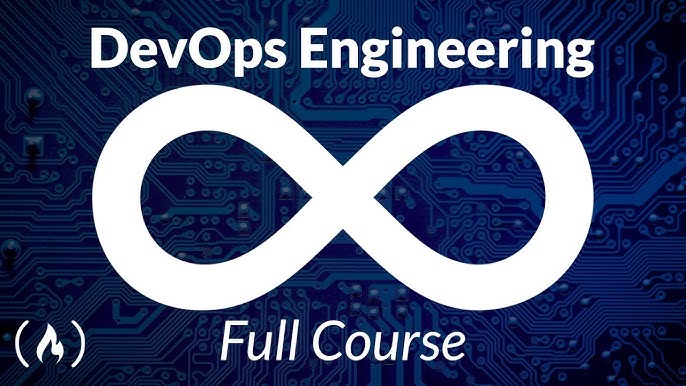Blog Details
IT Support Fundamentals Your Guide to Effective IT Assistance

IT Support Fundamentals: Your Guide to Effective IT Assistance. Discover essential tips in IT Support Fundamentals: Your Guide to Effective IT Assistance. Learn how to get the most out of your IT support today!

Introduction to IT Support Fundamentals
In the modern business environment, having a proficient IT support system is essential for smooth operations. Whether you are a startup or an established enterprise, IT Support Fundamentals: Your Guide to Effective IT Assistance is critical for addressing technical issues, managing resources effectively, & ensuring that technology serves your business needs. Having firsthand experience with various technical support scenarios has reinforced the importance of a solid foundation in IT support. This guide aims to equip readers with the key concepts, common practices, & actionable advice necessary for effective IT support.
Common IT Support Issues
IT support often deals with a myriad of common issues that can impact productivity. Recognizing these frequent problems can help businesses prepare & respond effectively. Some common issues faced include:
Network connectivity problems
Hardware failures
Software installation errors
Data loss or corruption
Device compatibility challenges
For instance, network connectivity problems can cause significant disruptions & result in a loss of productivity. To address this issue, it’s vital to have a troubleshooting process in place. This can include checking cables, resetting routers, or conducting network diagnostics. Further, awareness of the software & hardware dependencies helps in mitigating risks associated with compatibility issues. By understanding these common challenges, businesses can create proactive strategies to minimize downtime & enhance operational efficiency.
Table of Common IT Support Issues
Issue Solution
Network Connectivity Check cables, restart systems, test with alternative devices
Hardware Failures Run diagnostics, replace failed components, maintain regular backups
Software Installation Errors Check for compatibility, follow official installation guides
Effective IT Support Communication
Clear communication plays a pivotal role in delivering effective IT assistance. IT support professionals must engage with users to understand their issues fully. When employees know how to relay information clearly, it speeds up problem resolution. Establishing a communication protocol is beneficial. Start by encouraging users to provide:
A detailed description of the problem
Steps already taken to resolve it
Urgency level of the support request
For instance, using a ticketing system can streamline communication. This system allows IT professionals to track requests & prioritize urgent matters effectively. Regular updates regarding the status of support requests can also foster better relationships. Timely & effective communication not only results in quicker resolutions but also instills trust & confidence in the IT support process.
Core Components of IT Support
An efficient IT support structure encompasses several core components that enhance its effectiveness. These components include:
Help Desk Support
Remote Support Services
On-site Support
IT Asset Management
Continuous Training
The help desk is the first point of contact for users when they encounter issues. By equipping help desk staff with the right tools & training, companies can improve response times & ensure accurate problem-solving. Remote support services facilitate assistance from any location, which is particularly useful for businesses with remote employees. On-site support is vital for hardware issues that cannot be resolved remotely. Lastly, continuous training ensures that IT professionals stay current with evolving technologies, allowing them to offer relevant support consistently.
Table of Core IT Support Components
Component Description
Help Desk Support Initial contact point for user issues
Remote Support Services Assistance provided over the internet
On-site Support Physical assistance with hardware issues
Strategies for Effective IT Support
To enhance the effectiveness of IT support, organizations can implement various strategies. These strategies include:
Establishing clear protocols
Investing in training programs
Utilizing management tools
Regularly gathering user feedback
Implementing clear protocols ensures that IT professionals follow standardized procedures for troubleshooting & resolutions. Training programs help IT staff remain knowledgeable about the latest tools & technologies, while management tools facilitate workflow efficiency. User feedback is essential for continuous improvement; it provides insights into areas where IT support excels or needs enhancement. By embracing these strategies, organizations can create a robust IT support system that aligns with their operations & enhances productivity.
Best Practices for IT Support Documentation
Having comprehensive documentation is a best practice for IT support. It serves as a vital resource for both support professionals & end-users. There are several key aspects to consider when creating IT support documentation:
Consistency in format & style
Clear & concise instructions
Regular updates & reviews
Accessible formats for various user needs
Documentation should include FAQs, troubleshooting guides, & policy manuals. Consistency in presentation makes it easier for users to follow instructions. Clear language avoids confusion, while regular reviews ensure that the documentation remains relevant & accurate. And don't forget, providing documentation in accessible formats such as videos & step-by-step guides caters to different learning preferences. A well-maintained knowledge base significantly reduces the number of repetitive queries, freeing up IT support staff to focus on more complex issues.
Utilizing Technology in IT Support
Advancements in technology have transformed IT support fundamentals. Leveraging tools can enhance the speed & accuracy of support services. Some essential technologies include:
Remote Desktop Applications
Automated Ticketing Systems
Chatbots for Initial Support
Monitoring & Diagnostic Tools
Remote desktop applications allow IT support staff to access user machines directly, aiding in faster problem resolution. Automated ticketing systems streamline requests & ensure proper tracking of issues. And don't forget, chatbots can assist with initial queries, directing users to relevant resources or ticket submissions for more complex issues. Monitoring tools provide real-time insights into network performance & potential issues, enabling proactive measures. Utilizing these technologies maximizes the effectiveness of IT support efforts.
Quote on IT Support Fundamentals
“IT support is not just about fixing problems; it's about enhancing the user experience.” - Hortense O'Hara
FAQ Section
What is IT support?
IT support involves providing technical assistance related to computer systems, software applications, & hardware. It aims to ensure users can operate their devices effectively without experiencing interruptions.
What skills are important for IT support professionals?
Key skills include problem-solving, communication, technical proficiency, & patience. Support personnel must effectively diagnose issues & provide clear instructions to users.
How can businesses improve their IT support?
By developing clear protocols, investing in training, & utilizing appropriate technologies, businesses can enhance their IT support. Regularly seeking user feedback can also identify gaps & areas for improvement.
IT Support Fundamentals
In conclusion, understanding IT Support Fundamentals: Your Guide to Effective IT Assistance is crucial for optimizing information technology in any business environment. By addressing common issues, mastering effective communication, & implementing strategic practices, organizations can ensure that their IT support is robust & user-friendly. Following the guidelines presented here will help create an effective IT support ecosystem that fosters productivity & minimizes disruptions.






